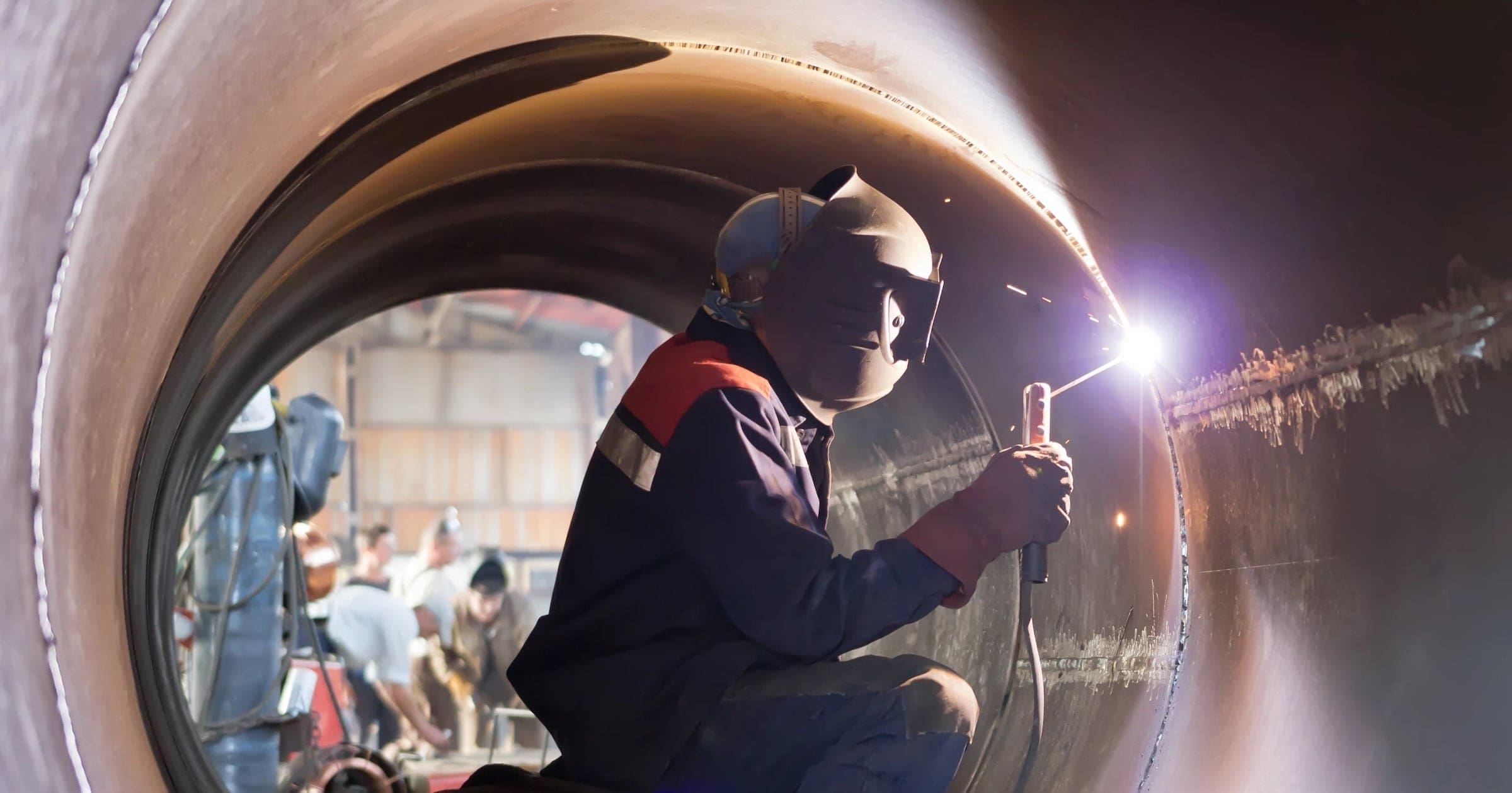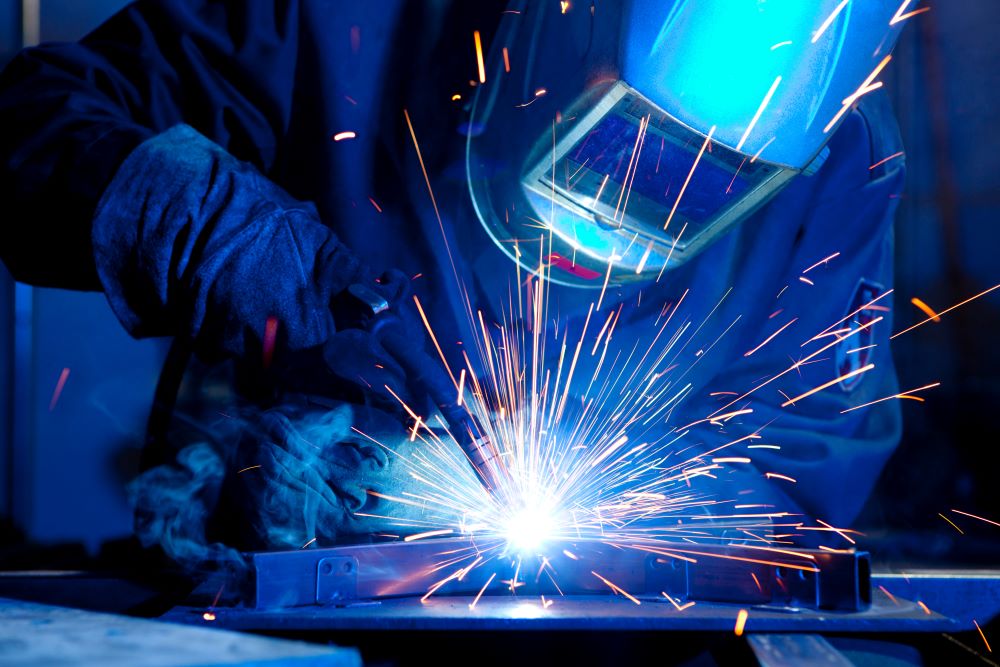Common problems explained and solved by Montana Mobile Welding and Repair Belgrade Fabrication
Wiki Article
Common Welding Repair Work Issues and Exactly How to Address Them Properly
Welding repair services often experience a variety of concerns that can jeopardize the integrity of the final product. Usual issues include inadequate infiltration, porosity, and misalignment, to name a few. Each flaw offers one-of-a-kind challenges that need certain methods for resolution. Recognizing these concerns is important for welders aiming to enhance their skills and results. This discussion will certainly explore these typical welding repair service issues and efficient techniques to address them.Inadequate Infiltration
Inadequate infiltration occurs when the weld metal fails to completely fuse with the base product, resulting in weak joints and prospective architectural failings. This problem commonly originates from insufficient warm input, inaccurate electrode angle, or inappropriate welding speed. Welders may run into poor penetration due to a mistake of the required parameters for a specific product density or type. Furthermore, contamination on the base product's surface can prevent effective bonding, worsening the trouble. To resolve insufficient infiltration, welders must assure suitable settings on their equipment and maintain a tidy work surface. Routine evaluation of welds is advised to determine any kind of shortages early, enabling timely adjustments and the prevention of compromised structural stability in bonded assemblies.Porosity
Porosity is a typical issue in bonded joints that shows up as small gas bubbles trapped within the weld metal. This issue can jeopardize the honesty of the weld, leading to lowered stamina and potential failure under stress and anxiety. Fabrication. Porosity generally arises from contamination, dampness, or incorrect welding methods, which allow gases to get away right into the molten weld pool. To address porosity, welders ought to assure correct surface area prep work, preserve a tidy workplace, and use suitable welding specifications. Furthermore, selecting the ideal filler material and securing gas can alleviate gas entrapment. Normal inspection and testing of welds can aid recognize porosity early, guaranteeing timely restorative activities are taken, thus protecting the high quality and integrity of the bonded frameworkImbalance
Imbalance in welding can develop from various factors, consisting of incorrect setup and thermal growth. Understanding the origin is crucial for efficient resolution. Numerous correction strategies are offered to straighten elements and assure architectural integrity.Reasons of Imbalance
Welding misalignment often originates from a selection of underlying concerns that can compromise architectural integrity. One key reason is incorrect fit-up of components prior to welding, which can bring about spaces and unequal surface areas. Variants in thermal expansion during the welding procedure can additionally result in distortion, particularly if the products being signed up with have various coefficients of growth. In addition, inadequate clamping and fixturing might fall short to hold parts safely in location, resulting in motion throughout welding. Improperly conserved equipment, consisting of welding machines and devices, might present variances in the weld bead, additional contributing to misalignment. Operator error, stemming from insufficient training or experience, can likewise play a considerable role in producing misaligned welds.
Modification Methods Readily Available
Attending to misalignment effectively requires a combination of rehabilitative techniques tailored to the specific concerns at hand. One common approach is using jigs or components to hold elements in the correct position during welding, ensuring constant alignment. Furthermore, preheating the products can help in reducing distortion and improve fit-up. For substantial misalignment, mechanical adjustment techniques, such as using hydraulic jacks or clamps, can be employed to correct the placement prior to welding. Post-weld warm treatment might also be essential to soothe stress and anxieties caused by misalignment. Finally, mindful evaluation and modification throughout the configuration phase can protect against misalignment problems from coming to be substantial troubles, promoting a smoother welding process and enhancing total architectural integrity.Distortion
Distortion is a typical difficulty in welding that can occur from numerous factors, including uneven heating & cooling. Comprehending the causes of distortion is necessary for implementing reliable prevention techniques. Resolving this concern not only boosts structural integrity yet additionally improves the general quality of the weld.Root causes of Distortion
When based on the intense warmth of welding, materials usually undertake adjustments that can lead to distortion. This sensation mainly occurs from thermal development and tightening throughout the welding procedure. As the weld area warms up, the product expands; upon cooling, it contracts, which can develop interior stresses. Furthermore, irregular home heating across a work surface can worsen these stresses, resulting in warping or bending. The type of product also plays a considerable duty; steels with varying thermal conductivity and coefficients of development might respond in different ways, leading to uncertain distortions. Additionally, bad joint style and insufficient fixturing can add to imbalance during welding, enhancing the possibility of distortion. Recognizing these reasons is essential for effective welding fixing and avoidance approaches.Prevention Techniques
Effective avoidance strategies for distortion during welding emphasis on controlling warm input and making certain appropriate joint layout. Keeping a consistent warmth input helps to reduce thermal development and contraction, which can lead to distortion. Using strategies such as pre-heating the workpiece can also decrease the temperature slope, advertising consistent home heating. Additionally, picking suitable joint designs, such as T-joints or lap joints, can enhance stability and decrease anxiety concentrations. Implementing appropriate fixturing to secure the work surfaces in position even more aids in keeping positioning during the welding process. Lastly, staggered welding sequences can disperse warm a lot more uniformly, protecting against localized distortion. By applying these methods, welders can considerably lower the likelihood of distortion and improve the general high quality of their welds.Fracturing
Fracturing is a common problem encountered in welding repair services, commonly resulting from various aspects such you could check here as improper air conditioning prices, product choice, or insufficient joint preparation. The incident of fractures can considerably endanger the stability of the weld, bring about prospective failures throughout operation. To resolve this issue, welders have to initially evaluate the origin triggers, making certain that products work and suitably picked for the specific application. Furthermore, managing the cooling price during the welding procedure is essential; fast air conditioning can induce stress and lead to fracturing. Proper joint design and prep work also add to decreasing the threat. Implementing these strategies can improve weld top quality and sturdiness, eventually lowering the chance of cracking in finished weldments.
Incomplete Blend
A substantial concern in welding repair services is incomplete fusion, which occurs when the weld metal does not appropriately bond with the base product or previous weld passes - Montana Mobile Welding and Repair. This problem can result in weak points in the joint, possibly jeopardizing the integrity of the welded framework. Variables contributing to incomplete fusion consist of inadequate warm input, improper welding technique, and contamination of the surface areas being signed up with. To address this issue successfully, welders need to ensure proper pre-weld cleaning and surface preparation, along with readjust their welding parameters to accomplish sufficient penetration and combination. Normal assessment during the welding procedure can also help recognize insufficient blend early, enabling timely rehabilitative actions to enhance the general quality of the weldOverheating
While welding repair work can boost architectural integrity, overheating provides a significant obstacle that can lead to product destruction. Too much warm during welding can change the mechanical homes of metals, resulting in reduced strength, raised brittleness, and warping. This sensation is particularly important in high-stress applications where architectural dependability is vital. Identifying getting too hot can entail aesthetic evaluations for discoloration or distortion, as well as monitoring temperature throughout the welding procedure. To alleviate the threats connected with overheating, welders should use proper methods, such as controlling warmth input, readjusting travel rate, and making use of suitable filler products. In addition, executing pre- and post-weld warmth therapies can help bring back product buildings and boost the total high quality of the fixing, guaranteeing long-term performance and safety.Frequently Asked Concerns
What Are the Usual Indications of a Welding Defect?

Just How Can I Check My Welds for Quality?
To evaluate welds for high quality, one can use visual examinations, ultrasonic testing, and radiographic methods. Each technique guarantees structural stability, recognizes problems, and verifies adherence to specified requirements, eventually boosting the reliability of the welded joints.What Security Safety Measures Should I Take While Welding?
When welding, one must focus on safety by using suitable personal protective devices, guaranteeing correct air flow, safeguarding combustible products away, maintaining a clean office, and knowing environments to stop injuries and mishaps.Can I Repair a Weld Without Redoing the Entire Joint?
Repairing a weld without redesigning the whole joint is feasible, depending upon the damages (Welding). Techniques such as grinding, adding filler material, or utilizing a welding procedure can properly deal with particular problems while preserving the surrounding frameworkWhat Equipment Are Essential for Effective Welding Repairs?
Vital devices for effective welding repair services include a welding device, wire brush, mill, safety gear, clamps, and filler materials. Each tool plays a crucial function in making sure quality and safety during the repair work procedure. Porosity commonly arises from contamination, wetness, or inappropriate welding strategies, which enable gases to get away right into the liquified weld pool. Improperly conserved equipment, consisting of welding makers and tools, might introduce disparities in the weld grain, further adding to imbalance. When subjected to the intense heat of welding, products official website usually go through adjustments that can lead to distortion. Cracking is a common problem encountered in welding repairs, usually resulting from different aspects such as incorrect cooling prices, product option, or poor joint prep work. A considerable concern in welding repair services is incomplete blend, which happens when go the weld metal does not adequately bond with the base material or previous weld passes.Report this wiki page